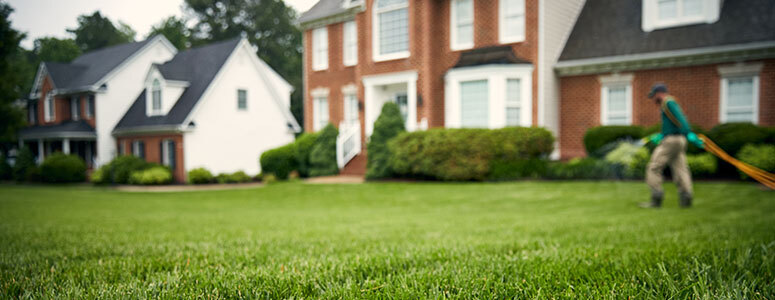Spring
As the snowfall of winter transitions into the rainfall of spring, your lawn will become a focal point for you and your family. There are a number of things to check of your spring-cleaning list to ensure your lawn is ready to go.
Keep Your Lawn Healthy this Spring
Conditions will soon be right for the onset of Brown Patch disease (Rhizoctonia sp.), the most threatening disease for Tall Fescue grasses. Virginia Green monitors weather conditions and our technicians have a trained eye to spot the earliest signs of any fungal outbreak you may encounter. When evening temperatures exceed 60 degrees Fahrenheit and humidity readings surpassing 75% during the day, Brown Patch will become prevalent.
For our customers on the Estate Lawn Care program, we will soon begin the first of four fungicide applications specifically designed to prevent disease damage to your lawn.
Though the grass looks dead, it is still alive. Once air and the soil temperatures rise in late March to early April, the turf color will begin to change and start to grow again.

Need Help With Seasonal Lawn Care?
Learn more about our lawn care services that will help you get ready for any season.
Spring Tips
Our team has gathered helpful tips and tricks to help your springtime performance. In our climate, even a properly mowed and watered lawn will likely experience a form of disease activity. However, it’s all about reducing every possible risk. If you have done all of the above and still notice spreading brown patches on your lawn, call Virginia Green at 804.285.6200.

Contact Virginia Green
Further questions regarding seasonal lawn care in the spring?